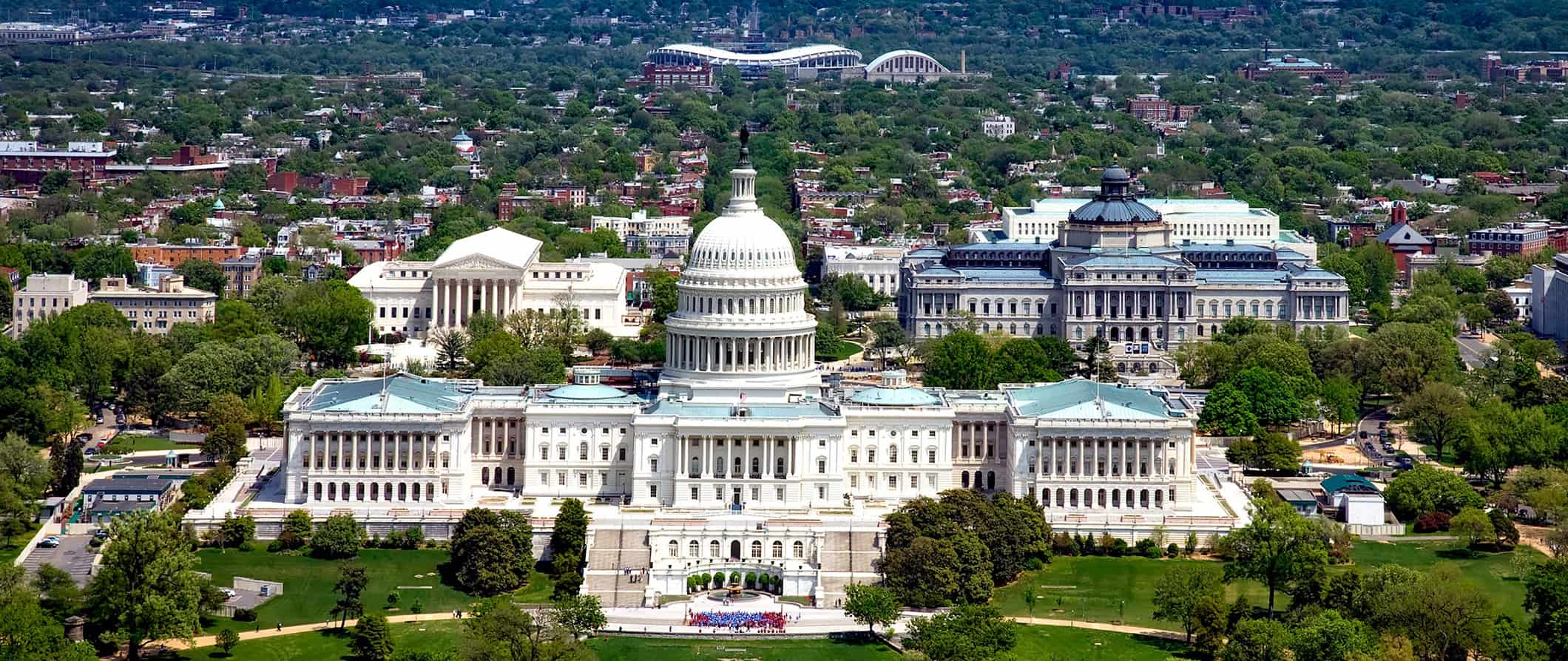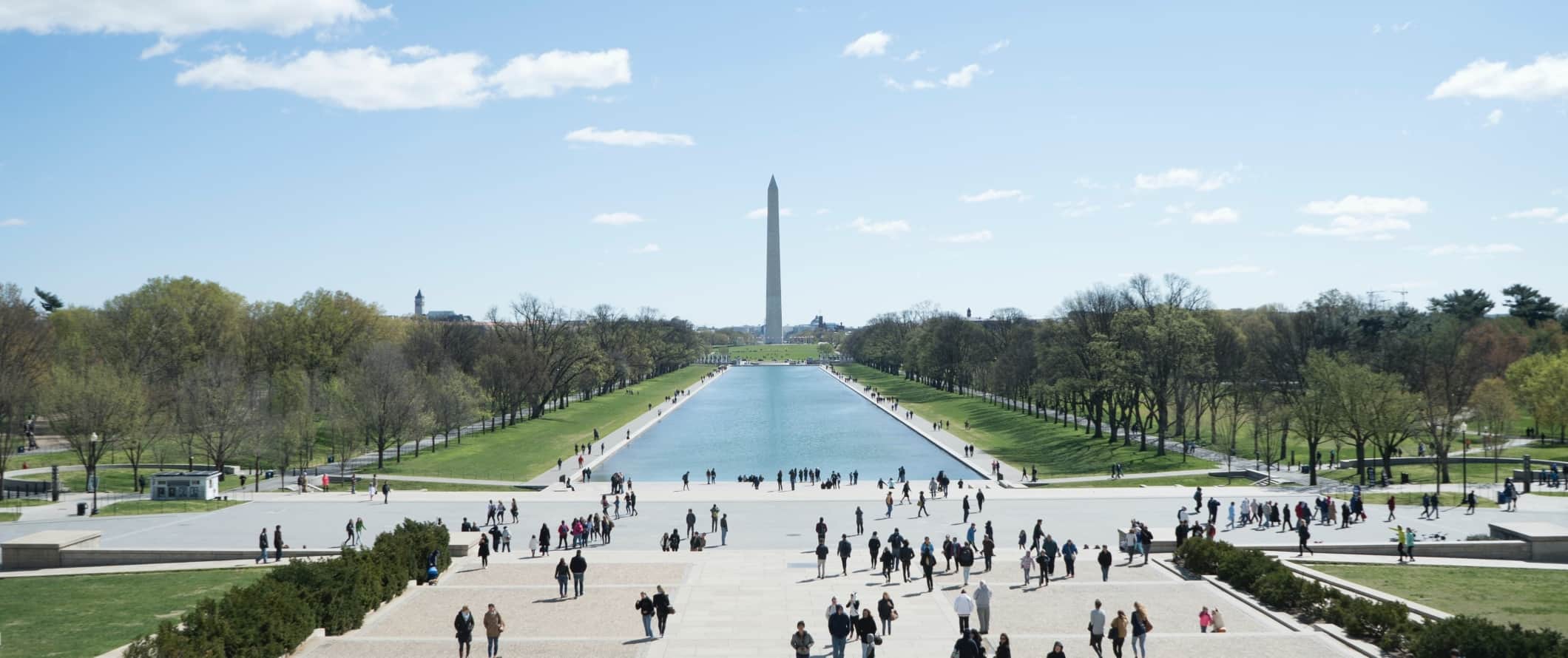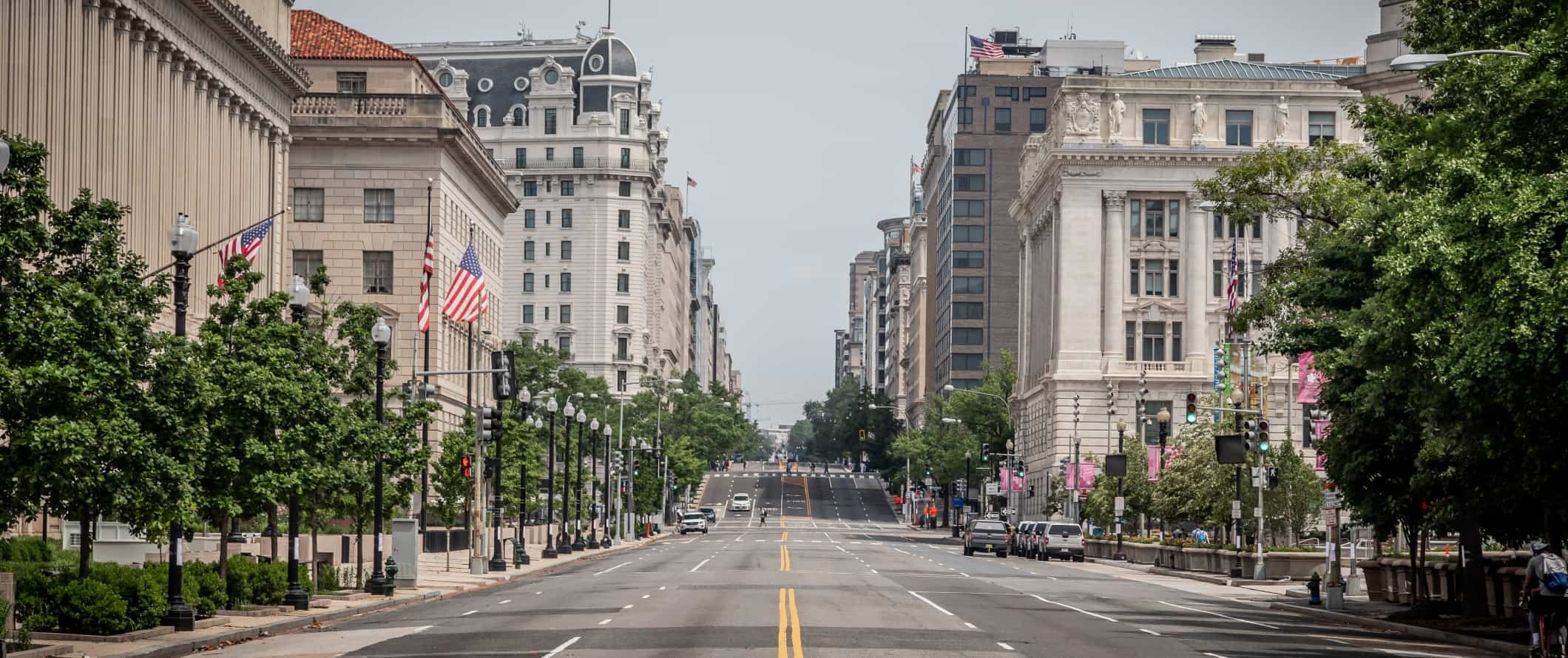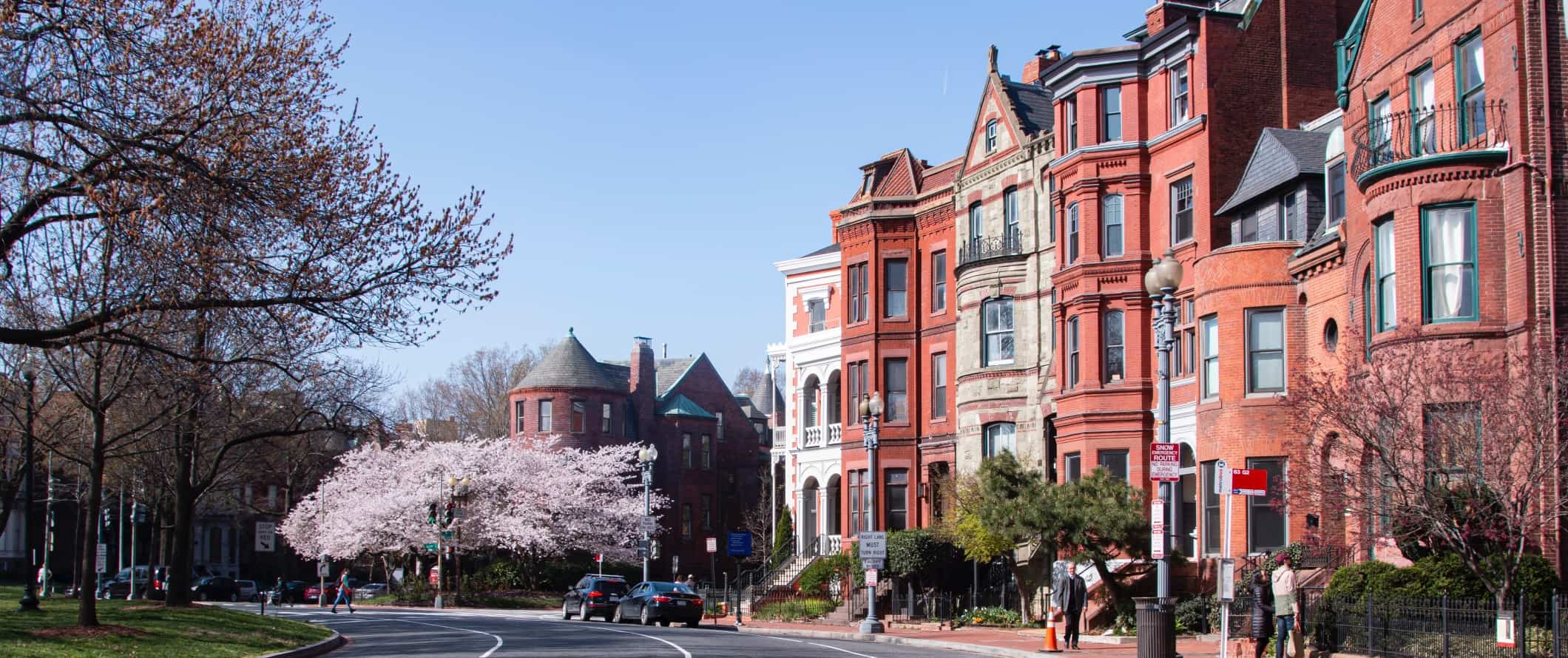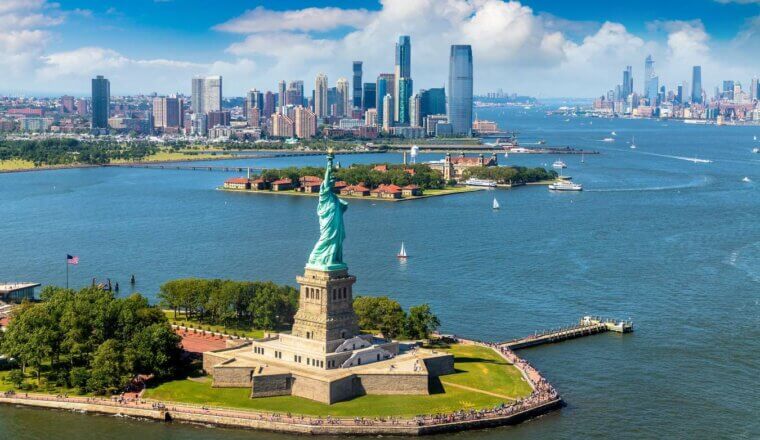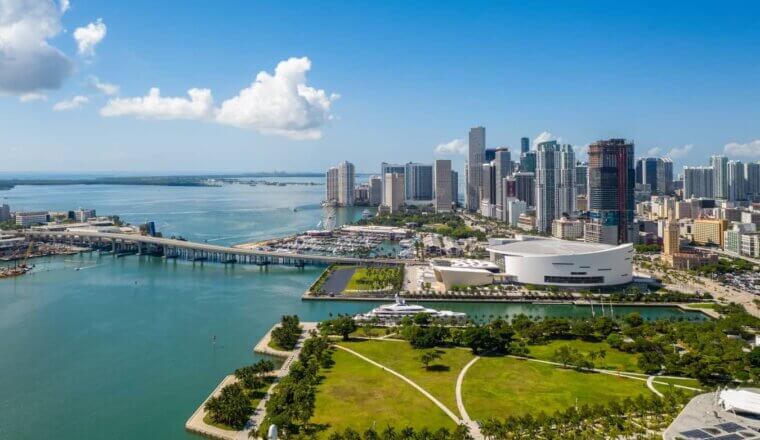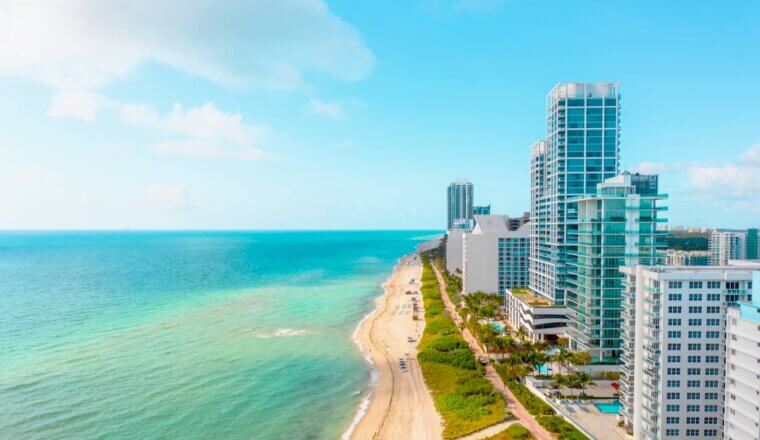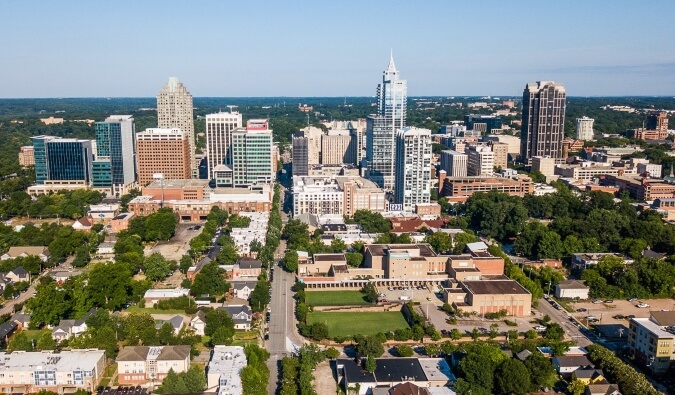Having grown up in New England, visiting Washington D.C. is something I’ve done since I was a kid. I love the capital. There are over 175 embassies, ambassador’s residences, and international cultural centers here. That means there’s a diversity and culture here you won’t find in most other cities in the US (except maybe NYC). Washington is a city where you can find every type of food and language in the world.
While the members of Congress and those who attend to them drive up the cost of living here, the city’s student population as well as all the free museums and institutes help keep D.C. a semi-affordable place to visit if you know what to do.
You’ll find an incredible food scene, lots of new and renovated live/work spaces, and a growing cocktail bar scene. Add in the history, tons of free museums, and iconic monuments, and you get an eclectic and fun city to visit with lots to see and do.
This travel guide to D.C. will give you a list of all my favorite tips on what to see, how to get around, and how to save money.
Table of Contents
Top 5 Things to See and Do in Washington D.C.
1. Tour the Capitol Building
Located on Capitol Hill, this is where Congress has met since 1800 to write U.S. laws. You’ll start with a short intro film and visit the neoclassical Rotunda, the Crypt (not actually a crypt, but so-called because it resembles one), and the National Statuary Hall (originally built as the meeting location for the House of Representatives). Tours take place Monday-Friday from 9am-3pm. Tickets are free, but you need to reserve them in advance.
2. Explore the Smithsonian Museums
Founded in 1846, the Smithsonian Institution is the largest museum, education, and research complex in the world. There are 17 museums, but some of the best are the Air and Space Museum, the Museum of the American Indian, the National Museum of African American History and Culture, the National Zoo, the Smithsonian Castle, and the American Art Museum. All Smithsonian museums are free to enter, and most are located right along the National Mall (with the exception of the Postal Museum and the Portrait Gallery/American Art Museum).
3. Take a walk through Georgetown
Georgetown is a historic neighborhood that used to be a transit point for farmers selling tobacco in the 1700s. Its home to the oldest house in DC (built in 1765 and appropriately called the Old Stone House), as well as Georgetown University (one of the oldest and most prestigious universities in the United States). Today, the area is known for its fantastic shopping, waterfront harbor, dining scene, and nightlife. Spend some time strolling around taking in the beautiful and well-preserved Georgian homes and architecture. For a unique experience, take a ghost tour of Georgetown with Visit DC Tours.
4. Visit Arlington National Cemetery
This 639-acre (258-hectare) cemetery is the final resting place for more than 400,000 military personnel as well as President John F. Kennedy and his family. An eternal flame marks JFK’s grave. Nearby you can find the Tomb of the Unknown Soldier, where a changing of the guard ceremony takes place every 30-60 minutes. The cemetery is open daily, 8am-5pm and free to visit if you’re on foot (no vehicles/bicycles are allowed unless attending a service). For an in-depth 5-hour walking tour, go with Babylon Tours.
5. Check out the monuments
All the city’s major monuments and memorials are located at the National Mall and are free. With more than 100 monuments spanning over 1,000 acres (40 hectares), you could fill a good three or four days with them if you wanted. Personally, I’m a big fan of the Franklin D. Roosevelt monument though the Lincoln Memorial is the most popular. Nighttime walking tours of the Mall and its monuments from Get Your Guide last 2.5 hours and cost $83 USD.
Other Things to See and Do in Washington D.C.
1. Tour the White House
Take a tour of where the most powerful person in the country lives. Built in 1800, here you can learn the history of the building and all those who have inhabited it. You have to apply in advance to get tickets through your member of Congress (within 21-90 days of your visit). If you are a citizen of a foreign country, you need to arrange tours through your embassy in D.C. You will be asked to provide security information several weeks before your tour to be approved so be sure to book early! Tours are free.
2. Visit the Supreme Court
This Neoclassical building, known as the Marble Palace, was built in 1935 and is home to the highest court in the land. Court sessions are open to the public on a first-come, first-served basis and there are free 30-minute lectures in the main hall that explain how the court functions. Definitely try to attend one of the lectures as they offer a lot of information about how the court works. Note: The building is currently closed to the public due to COVID-19.
3.Visit the Holocaust Museum
The Holocaust museum is both wonderful and heart-wrenching. It features a large permanent exhibit that takes up three whole levels and tells the story of the Holocaust through films, photos, artifacts, and first-person stories. Tickets are free but must be reserved online (with a $1 USD advance reservation fee).
4. Take a free walking tour
One of the best ways to take in the city is on a free walking tour (I always start my visits to a new city with one). You get to see the city’s main sights, learn about its history, and have an expert on hand to ask any questions you have. DC Walkabout and Free Tours by Foot have a good selection to get you started. Just be sure to tip your guide at the end!
For a unique paid tour, check out the history tour & pub crawl from D.C. Crawling.
5. Visit the National Zoo
This zoo opened in 1889 and is home to over 1,800 animals spread over 160 acres (65 hectares). Here you’ll find lemurs, great apes, elephants, reptiles, pandas, and more. It was one of the first zoos in the world to create a scientific research program too. While I normally don’t like zoos, the scientific and conservation work they do here is done ethically. As part of the Smithsonian, the zoo is free to visit though you will still need to make a reservation online.
6. Visit the Spy Museum
Opened in 2002, the International Spy Museum has exhibits on both historical and contemporary spy craft. See shoes with false bottoms, photos of infamous spies, and interviews with former intelligence officers. There are over 7,000 items in the collection, with information going back to ancient Egypt and Greece and how their spies operated. It’s super interesting! Tickets start at $26.95 USD.
7. See the cherry blossoms
If you’re in Washington between March and April, don’t miss the Cherry Blossom Festival, which brings in 1.5 million visitors each year. The trees were a gift from Japan to the United States in 1912 and their blossoming is marked by a celebration that includes concerts and fireworks. Tidal Basin, East Potomac Park, and the Washington Monument are the best places to see them up close.
8. Visit Alexandria’s Old Town
Head across the river to Alexandria, VA, a small town with cobblestone streets dotted with colonial buildings and historical landmarks. One of the most fun things to do here is the pub crawl/haunted ghost tour, where you explore historic places and haunted buildings while also visiting different pubs. Nightly Spirits runs tours for $25 USD per person. While you’re here, don’t miss the old colonial manors, the former torpedo factory, and the skinniest historic house in the USA (it’s just 7 feet wide!).
9. Explore the National Gallery of Art
This museum has two wings: the east wing, which houses the gallery’s more modern works (including works by Henri Matisse and Mark Rothko); and the west wing, which contains the collection’s older works (such as works by Sandro Botticelli and Claude Monet). You’ll see a lot of artists painting here and it’s fascinating watching them work to recreate these historic masterpieces. During the summer, the Sculpture Garden often hosts live music too. Admission is free but reservations need to be made online.
10. Visit Embassies during Passport DC
During this annual springtime celebration, more than 70 embassies open their doors to visitors, staging cultural demonstrations, food tastings, and music and dance performances. It’s a remarkable way to spend a few days learning about various cultures and eating tons of delicious food! It takes place every year throughout the month of May. You can learn more at culturaltourismdc.org.
11. Visit the Library of Congress
This is the largest library in the world. There are over 16 million books here and over 120 million other items. Established in 1800, over 3,000 staff help keep this place running. It’s the main research center of the U.S. Congress and is home to the U.S. Copyright Office. Check the website for any special tours happening during your visit (sometimes they open the Music Division’s Whittall Pavilion for public viewing). Don’t miss Thomas Jefferson’s library, Bob Hope’s personal documents (including his famous joke file), and the Gershwin Room dedicated to famous musicians.
12. Hang out on the Tidal Basin
Built in the 19th century, the Tidal Basin is a manmade pond stretching two miles long the National Mall. It serves as a popular hangout spot for locals and visitors and is the best place to see the cherry blossom trees each spring. In the spring and summer months, you can rent a paddleboat ($32 USD/hour for a 4-person boat) and spend the afternoon relaxing on the pond.
13. See the National Arboretum
The 446-acre (180-hectare) National Arboretum provides a quiet oasis and is a peaceful spot to hang out with a book and enjoy some nature away from the busy city. It’s home to the National Capitol Columns, giant historic columns that once supported the East Portico of the U.S. Capitol from 1828-1958. Surrounding the columns are gardens as well as exhibits devoted to botanical research and conservation. The National Bonsai & Penjing Museum is located here as well. The arboretum and museum are free to visit with no advance tickets needed.
14. Explore the National Archives Museum
The National Archives Museum houses the Declaration of Independence, the Bill of Rights, and the Constitution, plus one of the few remaining copies of the Magna Carta left in the world. It’s a great place for history buffs as it’s filled with really informative panels. If you’re traveling with children, there are plenty of interactive exhibits inside too. They also host history lectures and panels, so check the website to see what’s happening during your visit. Admission is free, but space is limited, so online reservations are required.
15. Go distillery hopping
If you’re a fan of fine spirits, Washington has several distilleries around the city — many of which are within walking distance of one another. You can visit Republic Restoratives, One Eight, and Don Ciccio & Figli without having to walk far. Most have a tasting room and some even offer self-guided tours.
16. See live music at Wolf Trap
Wolf Trap National Park for the Performing Arts is a scenic nature park that doubles as a music venue. It hosts tons of live music year-round at the Filene Center. Big performers like Lenny Kravitz, Sting, and The Beach Boys have played here in the past so check the website to see what’s on during your visit.
17. Take a food tour
Blue Fern DC runs a food tour around U Street, which was the heart of Black culture in the USA from the 1920s-1940s. Learn about the history of the area and sample some iconic dishes as you explore. Tours start at $99 USD per person.
For more information on other cities in the United States, check out these guides:
Washington D.C. Travel Costs
Hostel prices – During peak season, a bed in a 4-6-bed dorm costs around $55-65 USD per night, while the same dorm costs $50-55 USD in the off-season. For a room with eight beds or more, expect to pay around $50-60 USD in peak season and $40-45 USD in the off-season. Private double rooms cost $130-150 USD per night in peak season and around $120 USD per night in the off-season. Free Wi-Fi is standard and some hostels have self-catering facilities. Most do not offer free breakfast.
For those traveling with a tent, camping is available outside the city starting at $20 USD per night for a basic two-person plot without electricity.
Budget hotel prices – Budget two-star hotels start at $140 USD in peak season. In the off-season, budget rooms cost closer to $100 USD per night.
There are lots of Airbnb options here as well. Private rooms start at $50-70 USD per night while an entire home/apartment costs at least $125 USD (though they average double that so be sure to book early).
Food – Despite being home to some of the country’s wealthiest dignitaries, there are a lot of cheap food options here. You can get bowls of chili from the world-famous Ben’s Chili Bowl for around $5 USD. Be sure to also try half-smokes, a sausage that is smoked before it’s cooked (it’s the city’s signature dish). You can find them for $6-7 USD.
Chinese food costs around $11-15 USD while a large pizza is also $11-15 USD. Indian food costs between $15-20 USD for a main dish while fast food (think McDonald’s) is $8 USD for a combo meal.
For a casual meal at a restaurant with table service, expect to pay around $20 USD. For a three-course meal with a drink, prices start at $55 USD and go up from there.
Beer costs around $7 USD while a latte/cappuccino is $4.75 USD. Bottled water is $2 USD.
If you cook your own food, expect to pay about $55-60 USD per week for basic staples like rice, pasta, vegetables, and some meat.
Backpacking Washington D.C. Suggested Budgets
If you’re backpacking Washington D.C, expect to spend about $85 per day. On this budget, you can stay in a hostel dorm, use public transportation to get around, cook all your meals, and do free activities like visit the Smithsonian and take free walking tours. If you plan on drinking, add another $10-20 USD per day to your budget.
A mid-range budget of about $205 USD per day covers staying in a private Airbnb, having a few drinks at the bar, taking the occasional taxi to get around, eating out for a few meals, and doing some paid activities like in-depth walking tours and museum visits.
On a “luxury” budget of about $400 USD or more per day, you can stay in a hotel, drink as much as you’d like, eat out anywhere you want, and do more guided tours and activities. This is just the ground floor for luxury though. The sky is the limit!
Washington D.C. Travel Guide: Money-Saving Tips
Washington can be an expensive city if you’re eating and drinking out a lot. However, budget travelers have endless options for free attractions and cheap food to help keep costs down. Here are some ways to save money in D.C:
- Visit the museums and monuments for free – Most of the museums in D.C. are free. The D.C. museums are some of the most incredible in the U.S. Along with all the museums, the monuments are also free to see.
- Take a free walking tour – DC Walkabout and Free Tours by Foot offer free walking tours of the city. I suggest doing one of these when you arrive so you can ask the tour guide all your questions and get recommendations on what to do in the city. Just be sure to tip your guide!
- Check out the public performances – The Kennedy Center’s Millennium Stage offers free performances on a weekly basis. Some theaters offer student and senior pricing, and you can also save money by purchasing last-minute tickets.
- Free outdoor theater – During the summer, free outdoor movies are offered at many places around the city. Ask your hotel/hostel staff for details or check with the local tourism office.
- Walk everywhere – Since most of the monuments and museums are in the central area, you can walk everywhere to save money.
- Check out free embassy events – Even when it’s not Passport DC month, DC’s embassies host year-round events. Some are paid concerts or lectures, but often embassies will host free events like screenings and book signings. Eventbrite.com has a regularly updated list.
- Save money on rideshares – Uber and Lyft are cheaper than taxis and are the best way to get around the city if you don’t want to take a bus or pay for a taxi.
- Stay with a local – Couchsurfing has plenty of hosts throughout the city who can show you around and let you stay with them for free. I’ve used it plenty of times and have really enjoyed it as a way to meet people and get insider tips and advice.
- Bring a water bottle – The tap water here is safe to drink so bring a reusable water bottle to save money and reduce your plastic use. LifeStraw is my go-to brand as their bottles have built in filters to ensure your water is always clean and safe.
Where to Stay in Washington D.C.
Washington D.C. has several affordable hostels around the city. Here are my favorites:
How to Get Around Washington D.C.
Public transportation – D.C’s subway system can get you to most places around the city. There are six color-coded lines, accessible via a rechargeable SmarTrip card. It costs $10 USD to buy and $8 USD of that is fare money (you can also use the SmarTrip app and use your phone as a contactless payment method, bypassing the need to get a physical card). Fares cost between $2.25-6 USD, depending on distance traveled and time of day (fares increase a little during rush hour).
There’s also an extensive bus system and monorail in the city. You need to pay with exact change or use your SmarTrip card. Fare for the bus is $2 USD and fares for Monorail vary by time. There are passes for the monorail and bus available as well ($13 USD for a day pass, $28 USD for a three-day pass, and $58 USD for a seven-day pass).
The DC Circulator bus runs between the main tourist areas, including Union State, the National Mall, and the White House area. Fares are $1 USD (you can also pay with your SmarTrip card).
There’s a limited streetcar route that also departs from Union State. It’s free to ride.
Bike rental – Capital Bikeshare is Washington D.C’s main bike-sharing program, with over 4,000 bicycles around the city. For a single trip, it costs $1 USD to unlock and then $0.05 USD per minute for a classic bike and $0.15 USD per minute for an ebike. A 24-hour pass is $8 USD (which covers unlimited 45-minute trips on a classic bike and $0.10 USD per minute on an ebike).
There are also lots of scooters here, including Bird, Jump, Lime, and Lyft. Most cost $1 USD to unlock and then $0.40 USD per minute. You need to download their apps to use them.
Water taxi – Potomac Riverboat Co. runs the water taxis up and down the river, between Georgetown, the Wharf, and Old Town Alexandria. Fares range from $15-18 USD per trip.
Taxis – Taxis are super expensive here! Fares start at $3.50 USD and then it’s $2.16 USD per mile after that. Skip them if you can.
Ridesharing – Uber and Lyft are cheaper than taxis and are the best way to get around a city if you don’t want to take a bus or pay for a cab.
Car rental – Car rentals can be found for as little as $35 USD per day for a multi-day rental. Drivers need to be 21. Unless you’re doing some trips outside the side though you won’t need to rent a car. For the best rental car deals, use Discover Cars.
When to Go to Washington D.C.
Spring (March-May) and autumn (September-November) are the best times to visit Washington. Autumn is particularly beautiful as the leaves change, but the National Cherry Blossom Festival at the end of March/early April is well worth the trip. May is also a good time to visit for Passport DC month. Average autumn temperatures are 68°F (20°C), while spring is slightly warmer.
Summer is peak season in D.C., which means more crowds and inflated prices. In July, temperatures can climb to 89°F (31°C) or higher. On the other hand, the atmosphere in the city is lively during this time and if you can tolerate the heat, it’s a great time to get outdoors and enjoy the free attractions.
Winter is the off-season. Temperatures can drop to below freezing, but you’ll get the cheapest accommodation rates. Plus, all the museums and historic sites are crowd-free so if you can stick to indoor activities this is an ideal time to come.
How to Stay Safe in Washington D.C.
D.C. is a safe place to backpack and travel as violent attacks here are very rare. As with any big city, pickpocketing and petty theft is your main concern, especially around nightlife areas like Shaw, Adams Morgan, and the Gallery Place-Chinatown Metro station. In general, be vigilant when taking public transportation and around tourist attractions. Thieves are known to take advantage of distracted visitors.
Around the main tourist areas and monuments, watch out for scams. You can learn more about some common travel scams to avoid here.
Solo female travelers should generally feel safe here, however, the standard precautions apply (never leave your drink unattended at the bar, never walk home alone intoxicated, etc.).
If you experience an emergency, dial 911 for assistance.
Always trust your gut instinct. Make copies of your personal documents, including your passport and ID. Forward your itinerary along to loved ones so they’ll know where you are.
The most important piece of advice I can offer is to purchase good travel insurance. Travel insurance will protect you against illness, injury, theft, and cancellations. It’s comprehensive protection in case anything goes wrong. I never go on a trip without it as I’ve had to use it many times in the past. You can use the widget below to find the policy right for you:
Washington Travel Guide: The Best Booking Resources
These are my favorite companies to use when I travel. They consistently have the best deals, offer world-class customer service and great value, and overall, are better than their competitors. They are the companies I use the most and are always the starting point in my search for travel deals.
- Skyscanner – Skyscanner is my favorite flight search engine. They search small websites and budget airlines that larger search sites tend to miss. They are hands down the number one place to start.
- Hostelworld – This is the best hostel accommodation site out there with the largest inventory, best search interface, and widest availability.
- Booking.com – The best all around booking site that constantly provides the cheapest and lowest rates. They have the widest selection of budget accommodation. In all my tests, they’ve always had the cheapest rates out of all the booking websites.
- Get Your Guide – Get Your Guide is a huge online marketplace for tours and excursions. They have tons of tour options available in cities all around the world, including everything from cooking classes, walking tours, street art lessons, and more!
- SafetyWing – Safety Wing offers convenient and affordable plans tailored to digital nomads and long-term travelers. They have cheap monthly plans, great customer service, and an easy-to-use claims process that makes it perfect for those on the road.
- LifeStraw – My go-to company for reusable water bottles with built-in filters so you can ensure your drinking water is always clean and safe.
- Unbound Merino – They make lightweight, durable, easy-to-clean travel clothing.
- Top Travel Credit Cards – Points are the best way to cut down travel expenses. Here’s my favorite point earning credit cards so you can get free travel!
Washington D.C. Travel Guide: Related Articles
Want more info? Check out all the articles I’ve written on United States travel and continue planning your trip:
